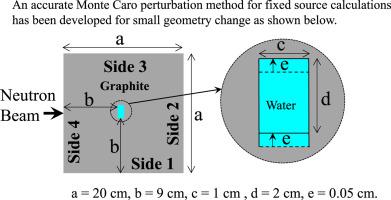当前位置:
X-MOL 学术
›
Prog. Nucl. Energy
›
论文详情
Our official English website, www.x-mol.net, welcomes your feedback! (Note: you will need to create a separate account there.)
Monte Carlo perturbation calculation for geometry change in fixed source problems with the perturbation source method
Progress in Nuclear Energy ( IF 2.7 ) Pub Date : 2021-02-01 , DOI: 10.1016/j.pnucene.2020.103611 Toshihiro Yamamoto , Hiroki Sakamoto
Progress in Nuclear Energy ( IF 2.7 ) Pub Date : 2021-02-01 , DOI: 10.1016/j.pnucene.2020.103611 Toshihiro Yamamoto , Hiroki Sakamoto

|
Abstract The perturbation source method (PSM), which is a Monte Carlo perturbation calculation method, is applied to geometry changes in fixed-source neutron transport problems. In PSM, perturbation particles that represent the flux difference due to the changes in geometry are explicitly tracked within the perturbed system. A perturbation calculation for geometry change can be performed by replacing the material in a perturbed region with the material that occupies the adjoining region beyond the geometry change. The efficiency of the PSM can be enhanced by adding a pseudo-scattering cross section to the perturbed region. For geometry changes where the perturbed region is small, PSM exhibits excellent performance compared to the two independent runs before and after the perturbation if optimized pseudo-scattering cross sections are used. This method can also be applied to perturbation due to an external boundary change. Although the correlated sampling method (CS) is another available Monte Carlo method for geometry change, PSM largely outperforms CS in terms of computational efficiency for the numerical examples tested in this study.
中文翻译:

用微扰源法计算固定源问题中几何变化的蒙特卡罗微扰
摘要 微扰源法(PSM)是一种蒙特卡罗微扰计算方法,适用于固定源中子输运问题的几何变化。在 PSM 中,在扰动系统内明确跟踪表示由于几何变化引起的通量差异的扰动粒子。几何变化的扰动计算可以通过用占据几何变化之外的相邻区域的材料替换扰动区域中的材料来执行。PSM 的效率可以通过向扰动区域添加伪散射截面来提高。对于扰动区域较小的几何变化,如果使用优化的伪散射截面,与扰动前后的两个独立运行相比,PSM 表现出优异的性能。这种方法也可以应用于由于外部边界变化引起的扰动。尽管相关采样方法 (CS) 是另一种适用于几何变化的蒙特卡罗方法,但 PSM 在本研究中测试的数值示例的计算效率方面大大优于 CS。
更新日期:2021-02-01
中文翻译:

用微扰源法计算固定源问题中几何变化的蒙特卡罗微扰
摘要 微扰源法(PSM)是一种蒙特卡罗微扰计算方法,适用于固定源中子输运问题的几何变化。在 PSM 中,在扰动系统内明确跟踪表示由于几何变化引起的通量差异的扰动粒子。几何变化的扰动计算可以通过用占据几何变化之外的相邻区域的材料替换扰动区域中的材料来执行。PSM 的效率可以通过向扰动区域添加伪散射截面来提高。对于扰动区域较小的几何变化,如果使用优化的伪散射截面,与扰动前后的两个独立运行相比,PSM 表现出优异的性能。这种方法也可以应用于由于外部边界变化引起的扰动。尽管相关采样方法 (CS) 是另一种适用于几何变化的蒙特卡罗方法,但 PSM 在本研究中测试的数值示例的计算效率方面大大优于 CS。


























 京公网安备 11010802027423号
京公网安备 11010802027423号